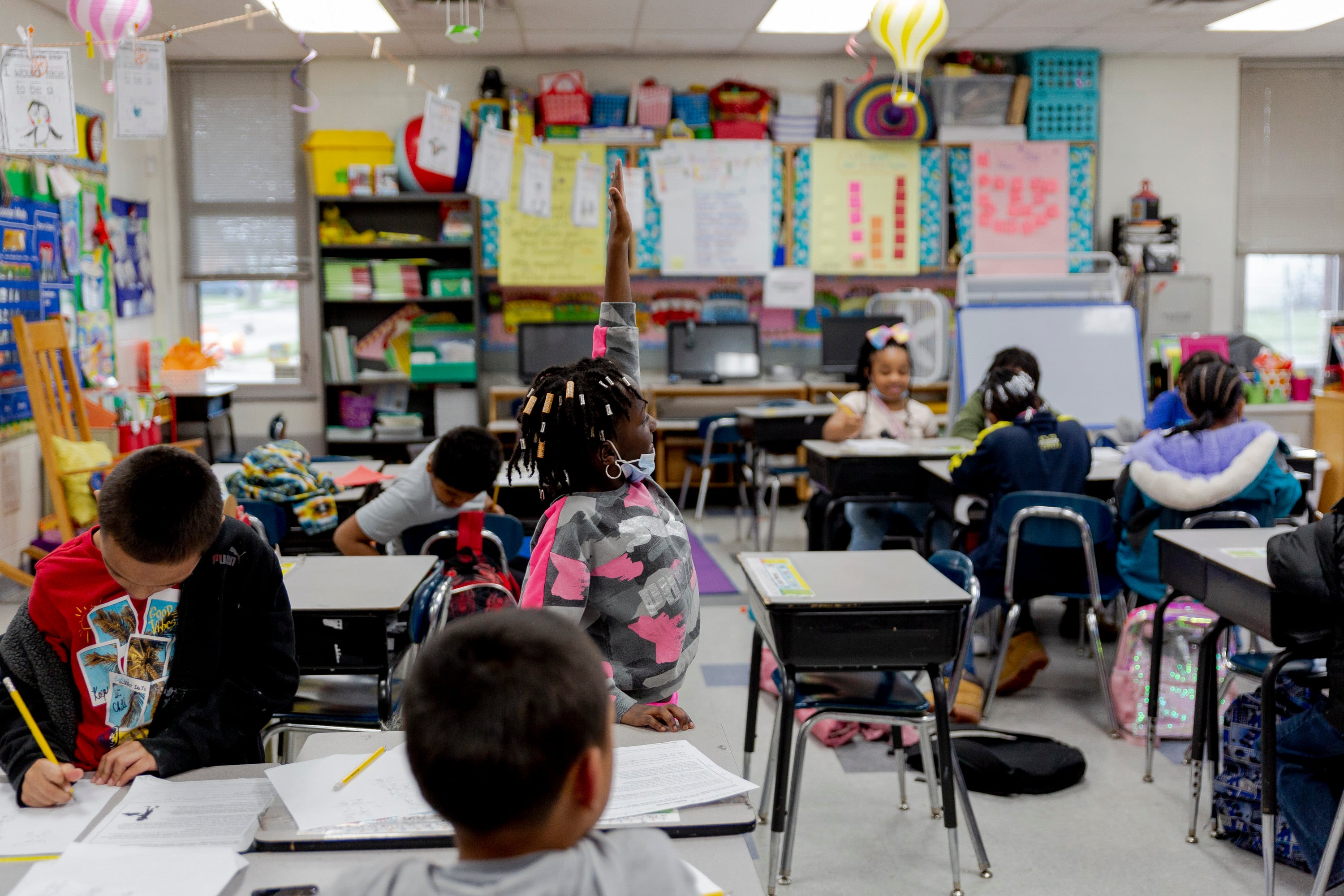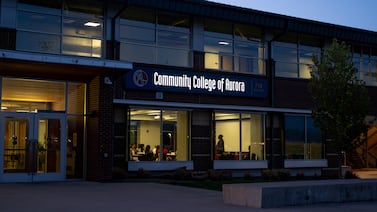Christy Borders is frank about the “pain points” Illinois has faced while working to get an intensive tutoring initiative up and running.
Officials underestimated how much they’d have to pay tutors. Some schools offered tutoring after school, but few students attended. Even with training, tutors didn’t always use the tried-and-true strategies for helping students.
To course-correct, state officials boosted pay to $50 an hour, helped schools redesign their programs to offer tutoring during the school day, and coached tutors who needed support.
“The truth is that there are a lot of scabbed knees and bruises in this work,” Borders, who oversees the state’s tutoring effort, said at a conference held last week at Stanford University about the future of tutoring. “Not going to sugar coat this, guys. It’s hard work.”
Early in the pandemic, experts identified high-dosage tutoring — the kind that’s offered multiple times per week, in small groups, with a consistent tutor — as a potentially successful strategy for helping students plug learning gaps. But more than two years into a national push to expand the reach of tutoring, many schools are still struggling with basics, like how to staff and schedule their programs.
Now, as COVID relief funds dwindle, some big questions remain, including: What are the best ways to get high-dosage tutoring to more students? And how can schools keep their programs going when those federal dollars are gone?
A key group of researchers, school leaders, and tutoring organizations attempted to answer some of those questions at the recent convening hosted by the National Student Support Accelerator, a Stanford program that shares research and helps schools launch tutoring programs.
Here are some of the major takeaways from that event:
Some schools are ditching after-school tutoring
School leaders from New Mexico, Tennessee, Texas, and elsewhere said they tried to tutor students outside of regular school hours, but attendance was lackluster. As a result, some schools are changing their programs to offer extra help during the day — which typically involves overhauling school schedules.
“You have to blank slate it, start over, and redesign based on what is necessary for students,” said Penny Schwinn, the outgoing Tennessee education commissioner, who has overseen a statewide tutoring initiative that involves 87 districts and some 200,000 students. “For us, it is: Do the tutoring during the school day. That’s the only thing that has worked.”
In Tennessee, many schools are making that work by using academic intervention time that was set aside before the pandemic. Schools also are leaning on full-time tutors, who can make it easier to reach more students during school hours, Schwinn said.
Some districts had success changing elementary school schedules, but got tripped up trying to create classes for middle and high schoolers. In Ector County, Texas, school leaders slotted in virtual tutoring time at one middle school this school year and will be working that into the master schedules of more middle and high schools this fall. Doing that work in advance is key, educators said.
“We’ll hopefully have better attendance,” said Carina Escajeda, who oversees virtual tutoring for the district. “Those have been tough schools to really reach the students.”
There’s a push to use AI, but it’s unclear how much
Several researchers pointed to emerging evidence that has found schools can pair human tutors with software that uses artificial intelligence and still get strong results for students. That’s good news, they say, because it means schools could potentially offer tutoring to more students at a lower price.
In one recent study, for example, researchers found that ninth graders in Chicago and New York City who got daily math tutoring could spend about half their time with a tutor and the other half using a computer program and see results similar to students who spent an entire class with a live tutor. But there’s no consensus yet on exactly how much time students need to spend with a human tutor for it to remain effective.
“If we go too far it’s not going to be great,” said Jonathan Guryan, a professor of education and social policy at Northwestern University who was involved in that research.
Research is underway to see what the right balance may be. Though there’s broad agreement that students will still need a human connection.
“AI can support high-impact tutoring by making materials better, by giving tutors really good information on students,” said Susanna Loeb, a Stanford education professor who’s involved in numerous tutoring studies. “Most students are still likely to need relationships to get them to work on the AI platforms and to help them thrive more broadly.”
Schools are measuring effects of tutoring in different ways
While some state and district leaders are working with researchers to rigorously study their tutoring programs, others say that’s not practical and are turning to things like attendance data, test scores, and student surveys to see if tutoring has moved the needle for students.
Experts say while that kind of descriptive data can be helpful, it won’t show whether it was the tutoring that made a difference, or not.
“If you don’t have the data, you can’t say if it’s not working,” said Shanitah Young, a director with the North Carolina Education Corps, which recruits and trains tutors to work in schools across the state. The organization’s program is being evaluated by Duke and North Carolina State universities. “It’s allowing us to say ‘Yes, these students have grown through tutoring,’ or ‘No, they have not.’”
There are several studies that are expected to be published this summer and fall that could help school districts make their programs more effective. That includes two gold-standard experiments looking at whether the tutor’s race or gender affect academic outcomes for students, and another rigorous study looking at whether student group size affects the quality of live virtual tutoring in reading.
Schools are preparing for the fiscal cliff
Schools and states had to set aside a large chunk of their COVID relief funds to address pandemic learning losses, and many put that toward tutoring. Still, by some estimates, only 1 in 10 students or fewer are getting that extra help.
Now, as those funds run out, school districts are looking for alternate ways to pay for their tutoring programs, or planning for cuts — raising questions about how many more students schools will be able to reach.
Some states, like Tennessee, have budgeted money to continue paying for high-dosage tutoring after federal COVID funds expire, while others, like Connecticut, are ramping up data collection to lobby state lawmakers for ongoing tutoring dollars.
Meanwhile, some school districts, like Texas’ Ector County, will be deciding whether they should cut ties with some of their more expensive tutoring providers, while other districts, like Guilford County, North Carolina, are taking on some longer-term costs by staffing a four-person department to oversee their tutoring work.
“Money is about to get very, very tight,” said Robin Lake, who heads the Center on Reinventing Public Education, which has been tracking district academic recovery plans. “What we’re hearing from districts is they are overwhelmed by the challenge of core instruction. They can’t even get their heads around the idea of interventions and standing up new tutoring programs.”
Kalyn Belsha is a national education reporter based in Chicago. Contact her at kbelsha@chalkbeat.org.






